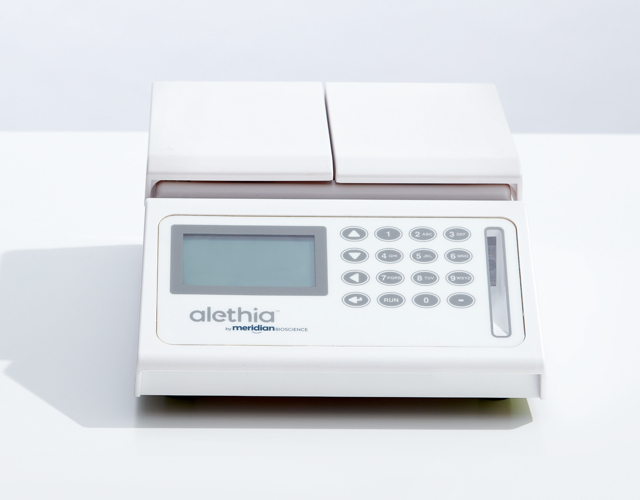Definitive answers, confidence in results
Definitive answers, confidence in results
Related Tests
- Healthcare Acquired Infections Alethia® C. difficile
- Pediatric & Neonatal Alethia® CMV Alethia® Group B Streptococcus
- Respiratory Alethia® Mycoplasma Direct Alethia® Pertussis Alethia® Group A Streptococcus
- Sexual Health Alethia® HSV 1&2
Support & Documents
Downloadable PDFs
Webinars & Videos
FAQs
- Viral culture: has a low sensitivity, especially for recurrent lesions, and declines rapidly as lesions begin to heal. This test method may take up to 7 days.
- Cytology: is an insensitive and nonspecific method of diagnosis that can be quite time consuming for genital lesions and therefore should not be relied on.
- Type-specific serology: type-specific glycoprotein G (gG)- based serologic assays should only be requested. False negative results might be more frequent at early stages of infection and this test method does not indicate an active infection.
The CDC guidelines recommend that the clinical diagnosis of genital herpes be confirmed by type-specific laboratory testing. Mucocutaneous manifestations of HSV-2 may have an atypical location or appearance which makes it important to perform a differential diagnosis of HSV-2 lesions including ulcerative sexually transmitted infections such as syphilis, chancroid, staphylococcal and other bacterial infections, pyoderma gangrenosum, squamous cell carcinoma and Behcet’s disease.
AAP indicates that the majority of infants (~73%) with HSV infection have lesions. Without lesions, the diagnosis of neonatal HSV infection is difficult. Swab specimens from cutaneous and mucocutaneous lesions should be tested before CSF and whole blood.
The CDC guidelines recommend that the clinical diagnosis of genital herpes be confirmed by type-specific laboratory testing.
The CDC recommends that all pregnant women be asked if they have a history of genital herpes, questioned carefully about symptoms of genital herpes at the onset of labor and examined carefully for herpetic lesions.2
AAP states that:
- 25% of infected infants have disseminated disease involving multiple organs
- 30% of infected infants have localized central nervous system disease (CNS)
- 45% of infected infants have disease localized to the skin, eyes and/or mouth (SEM disease)
1 Alethia HSV 1&2 Package Insert, SN11028.
2. Department of Health and Human Services, Centers for Disease Control and Prevention,Sexually Transmitted Diseases Treatment Guidelines, 2015. MMWR 2015:64
3. American Academy of Pediatrics. 2015 Report of the Committee on Infectious Disease. Red Book, 30th Edition. Herpes Simplex p. 432-445. https://redbook.solutions.aap.org/chapter.aspx?sectionid=88187163&bookid=1484
HSV 1 – 87529
HSV 2 – 87529-59
Pricing
To order, Contact your regional sales representative or use the following contact information:
- Email: sales@meridianbioscience.com
- Phone: +1 800 696-0739
- International Sales Extension: +1 513 271-3000

